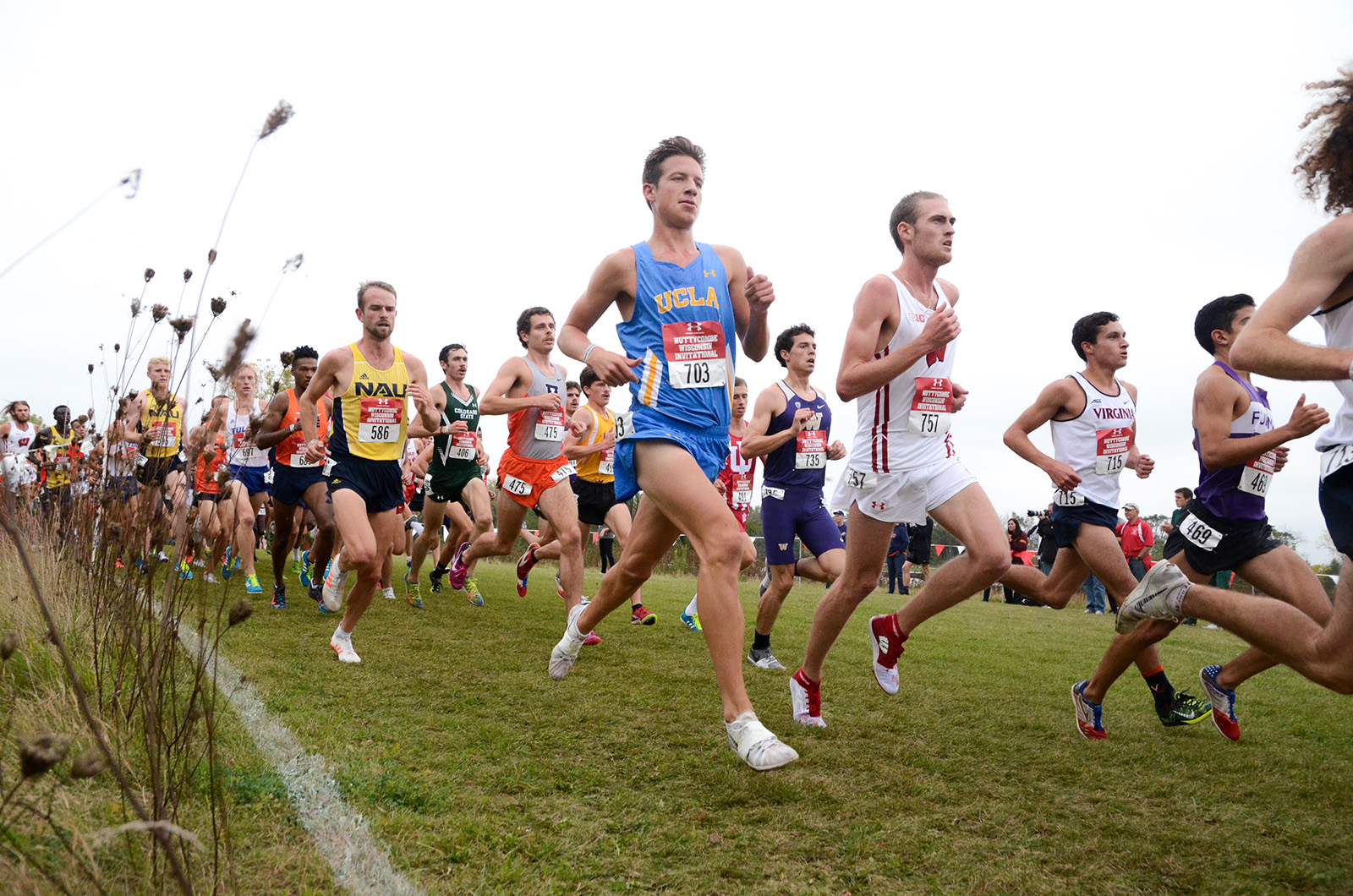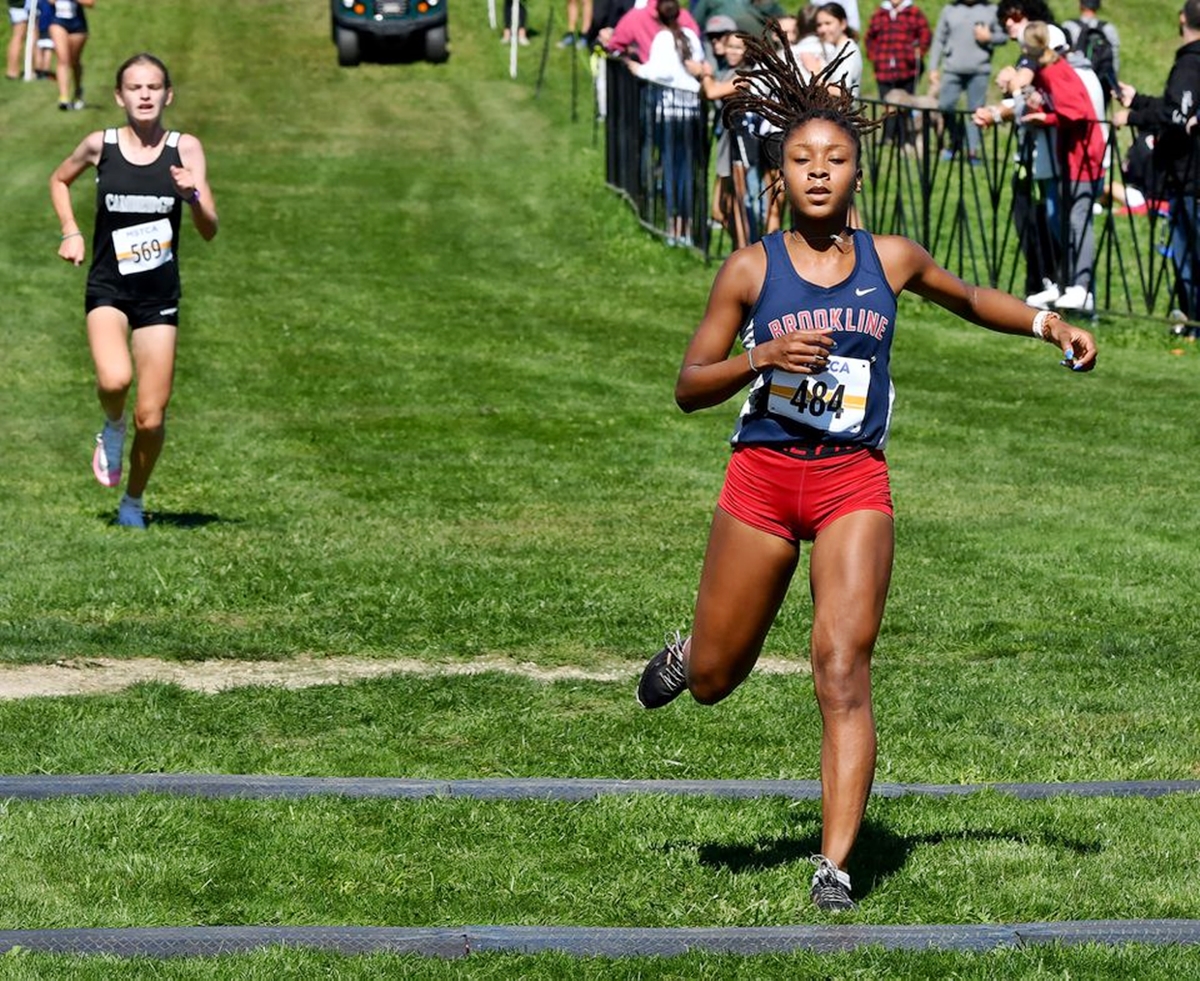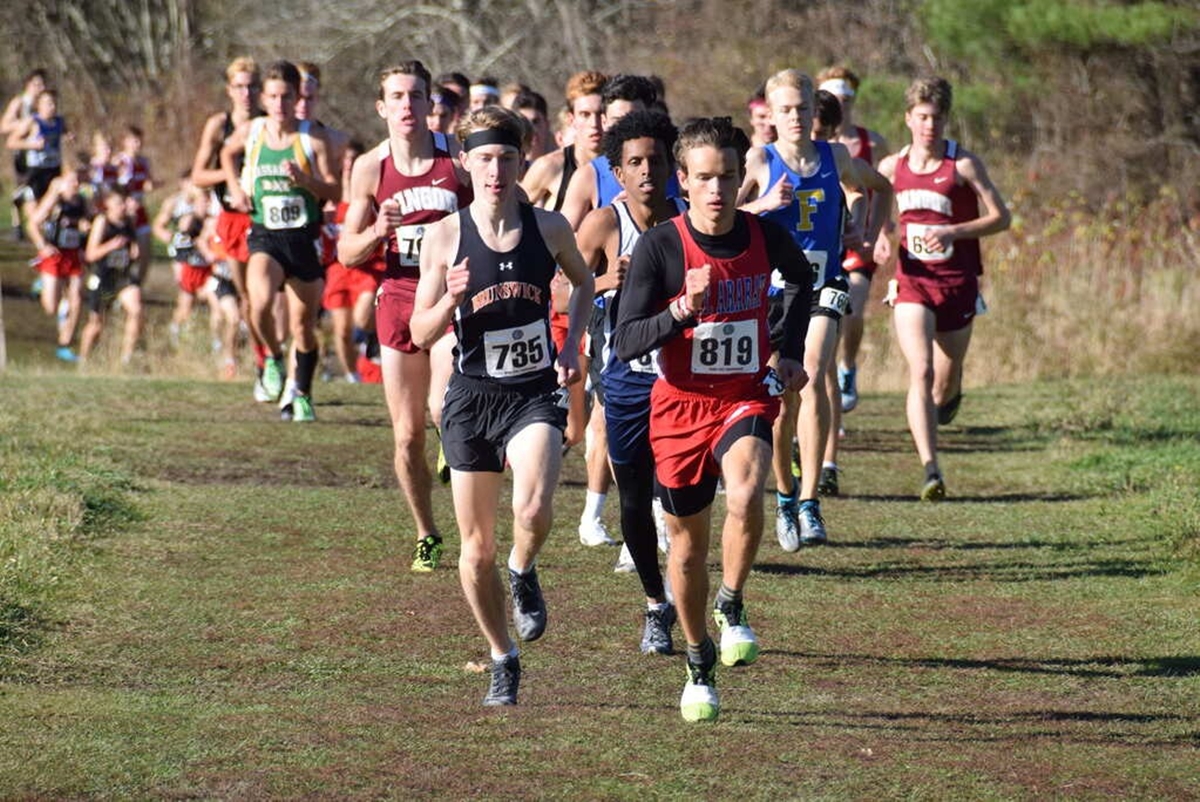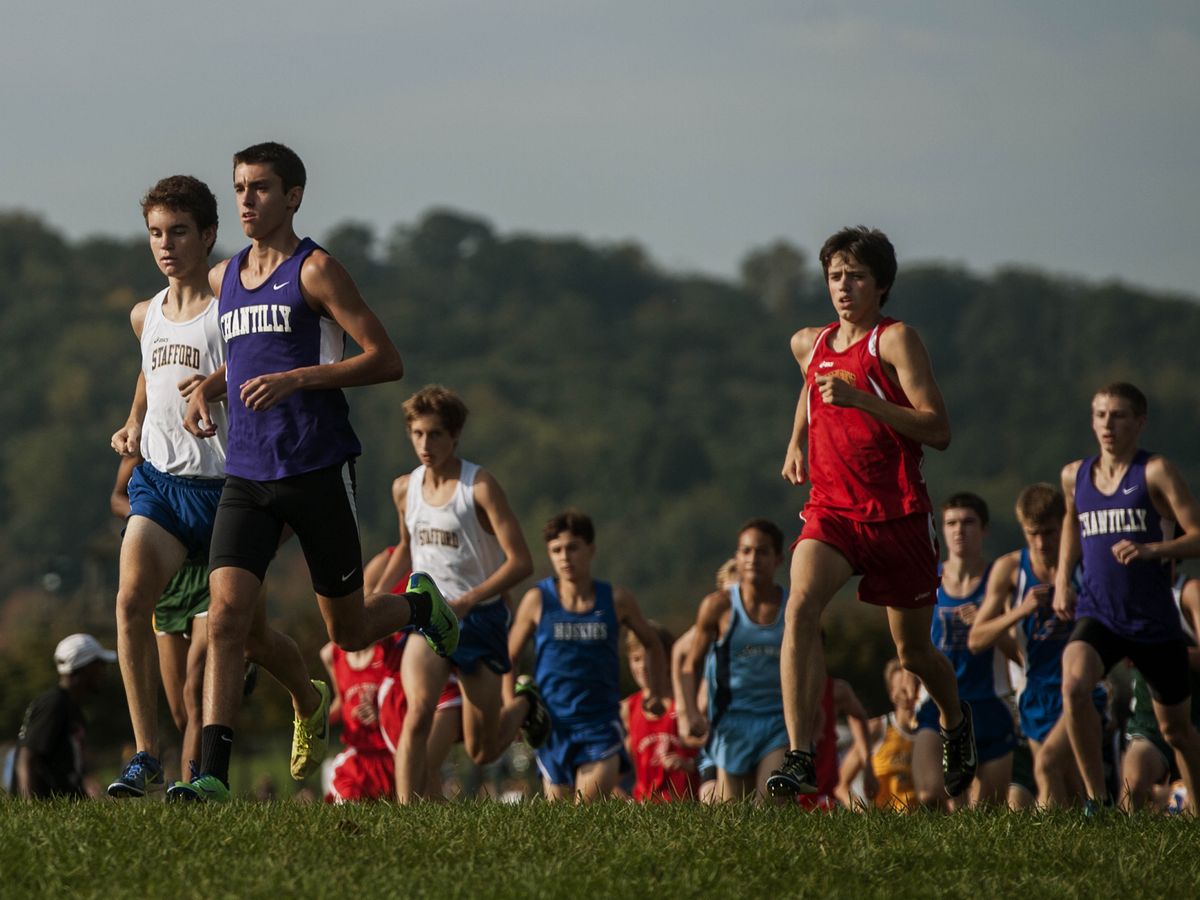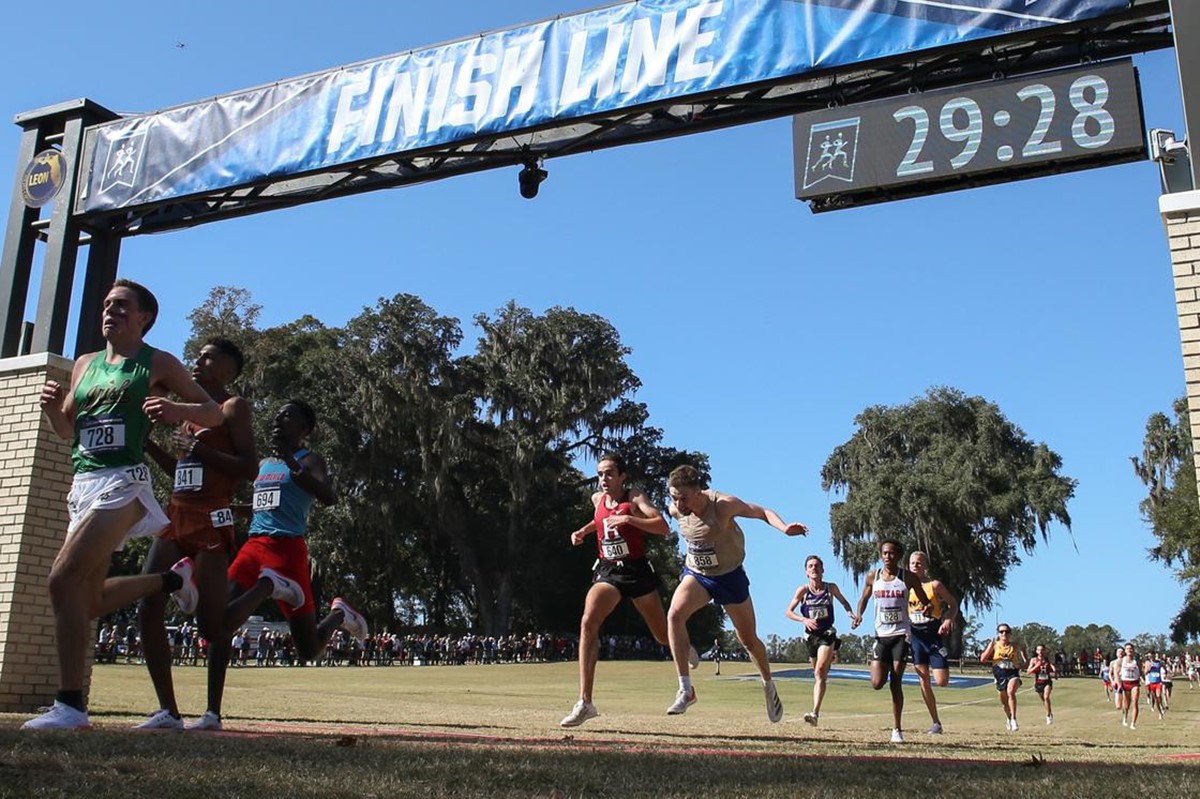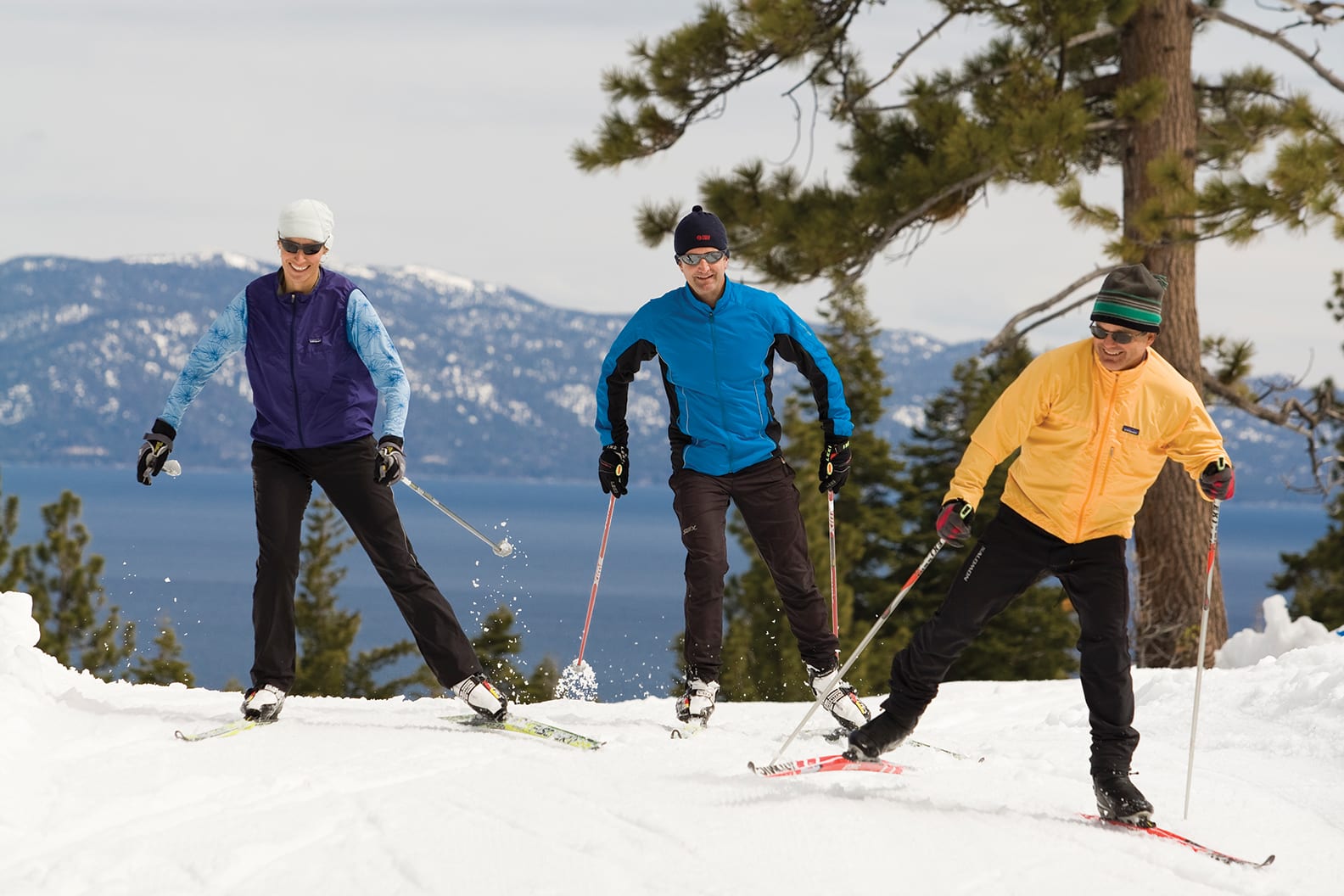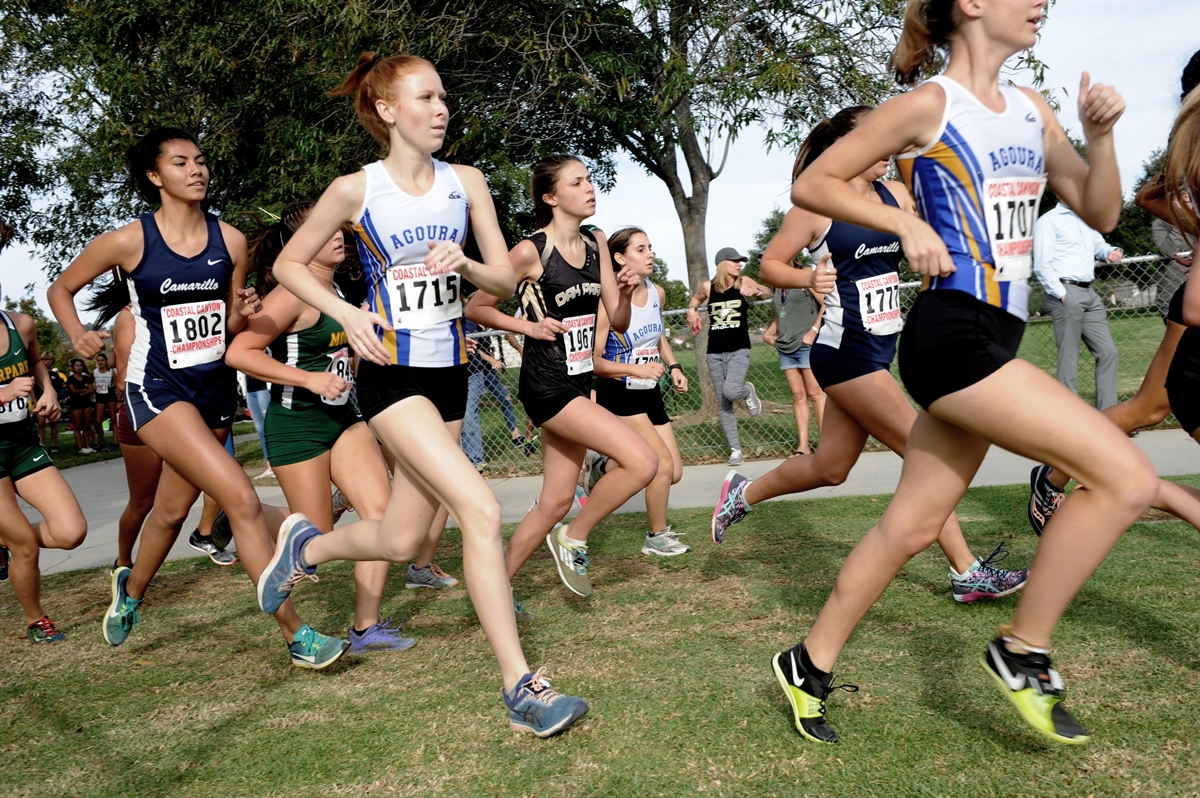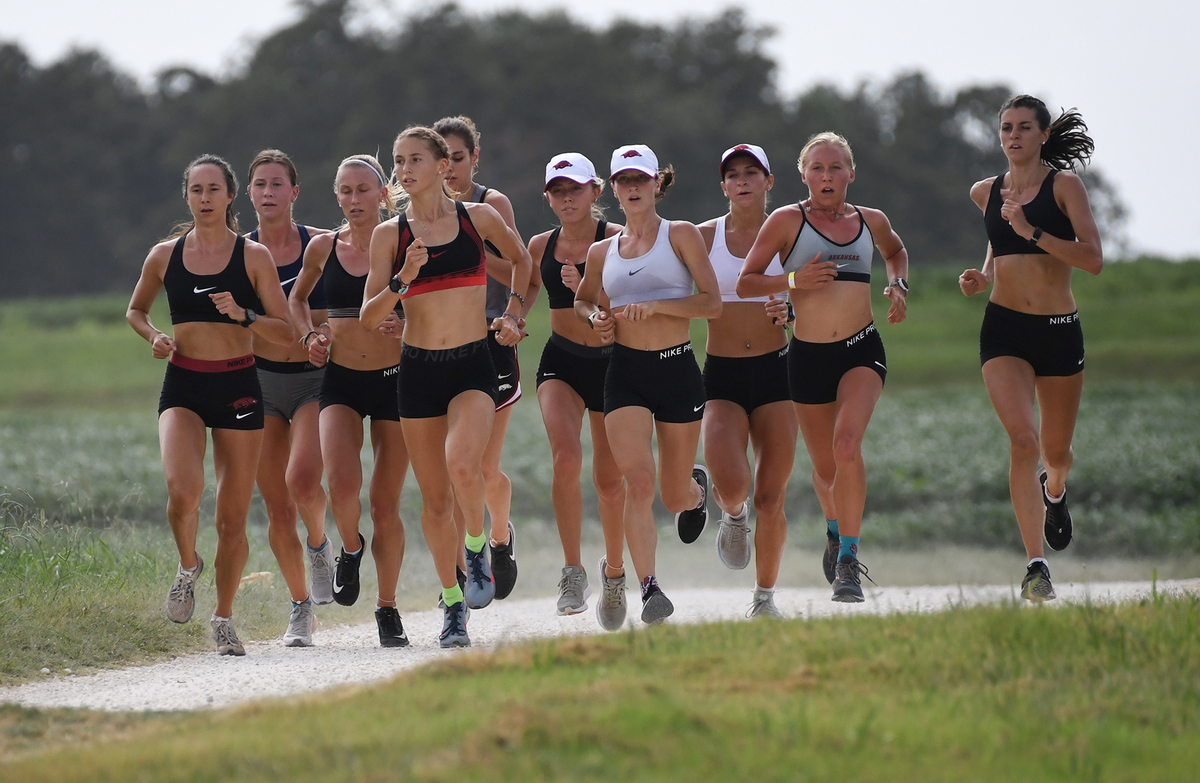

Featured
How Long Is Cross Country Season
Modified: August 21, 2023
Featured: Discover the duration of cross country season and learn about the length of time athletes participate in this popular sport.
Introduction
Cross country season is an exciting and challenging period for runners of all ages and skill levels. It is a sport that combines endurance, strategy, and teamwork, making it a unique and beloved activity for many athletes. Whether you are a high school student looking to represent your school or a seasoned runner aiming for personal accomplishments, cross country season offers an opportunity to push your limits and achieve your goals.
In this article, we will explore the intricacies of the cross country season, including its duration, the factors that influence its length, and the various competitions that take place during this time. Whether you are a novice runner considering joining a cross country team or a curious spectator seeking to learn more about the sport, this article will provide you with valuable insights into the world of cross country.
Throughout the article, we will see how cross country season offers a unique blend of physical endurance and mental fortitude. From the grueling training sessions to the exhilaration of race day, cross country season is a journey of self-discovery and personal growth. So, lace up your running shoes and join us as we dive into the world of cross country to uncover the secrets behind this enduring and captivating sport.
Definition of Cross Country Season
Cross country season refers to the period in which organized cross country races take place. Cross country is a sport that involves running long distances over natural terrains such as fields, trails, or cross country courses. Unlike track and field, which is typically held on a track, cross country takes place in diverse outdoor settings, adding an element of adventure and unpredictability to the sport.
The essence of cross country lies in its emphasis on endurance and strategy. Runners must navigate through varying terrains, including grass, gravel, dirt, and sometimes even hills or obstacles. The distance of a cross country race can range from 5 kilometers (3.1 miles) for high school and collegiate races to 10 kilometers (6.2 miles) for adult and championship level events.
Cross country season serves as the designated time for teams and runners to compete in a series of races. It typically aligns with the fall season in most regions, as the weather conditions are often more favorable for outdoor running during this time. However, the exact timing and length of cross country season can vary depending on the governing bodies and associations responsible for organizing competitions.
It’s important to note that cross country season is not limited to one age group or skill level. The sport is popular among youth, high school, college, and even recreational adult runners. Each level may have its own season, with varying race distances and competition rules.
Now that we have a clear understanding of what cross country season entails, let’s delve deeper into the duration of this exciting period and the factors that influence its length.
Duration of Cross Country Season
The duration of cross country season can vary depending on several factors, including geographical location, governing bodies, and the level of competition. However, in general, cross country season tends to span several months during the fall season.
For many high schools and colleges in the United States, cross country season typically begins in late summer or early fall, often in August or September, and lasts through November. This timeframe allows runners to train and compete in various races before the winter season arrives. It also allows teams to select their top runners for postseason competitions such as regional and state championships.
At the youth level, cross country season may start slightly earlier or later, depending on the specific region and local organizations. Youth cross country programs often align their season with the school year, starting in September and running until November or early December.
Internationally, the duration of cross country season can vary. In some countries, such as Australia and New Zealand, cross country races may take place during the winter season, which aligns with the traditional months of June, July, and August.
It’s important to note that while cross country season lasts for a specific period, the training and preparation for the season can extend beyond the official start and end dates. Runners often engage in pre-season training to build strength, endurance, and skill, and continue training during the off-season to maintain their fitness levels.
Now that we have a general understanding of the duration of cross country season, let’s explore the factors that influence its length and the different types of races that take place within this timeframe.
Factors Affecting the Length of Cross Country Season
The length of cross country season can be influenced by various factors that vary depending on the region, level of competition, and organizational structure. Here are some key factors that can affect the duration of cross country season:
- School or Organizational Policies: Some schools or organizations may have specific guidelines or policies regarding the length of the cross country season. These policies may be based on factors such as academic calendars, budget constraints, or other sports seasons that may overlap.
- Weather Conditions: The weather plays a significant role in determining the length of cross country season. Extreme weather conditions, such as heavy rain, snow, or extreme heat, can pose safety risks and hinder the ability to conduct races. Therefore, the season may be adjusted to ensure optimal running conditions and the well-being of participants.
- Competition Levels: The length of the cross country season can also be influenced by the level of competition. High school and college seasons often have a longer duration due to multiple rounds of qualifying races leading up to regional and state championships. On the other hand, recreational or local cross country leagues may have a shorter season with fewer races.
- Availability of Facilities: The availability of suitable cross country courses or venues can impact the length of the season. If there are limited facilities or resources, it may be necessary to schedule races over a longer period to accommodate all participating teams.
- Alignment with Other Sports Seasons: In some cases, cross country season may be adjusted to avoid overlapping with other sports seasons. This allows athletes to participate in multiple sports without scheduling conflicts and provides a balanced approach to their athletic commitments.
It’s important to note that while these factors can influence the length of cross country season, the primary goal is to create a competitive and enjoyable experience for participants. The duration of the season is ultimately determined by a balance between logistical considerations, athlete development, and the integrity of the sport.
Now that we understand the factors that can affect the length of cross country season, let’s explore the typical schedule of events that take place during this exciting time.
Typical Schedule of Cross Country Season
During the cross country season, teams and individuals participate in a variety of races and events, following a typical schedule that varies depending on the level of competition and region. While specific schedules may differ, here is a general outline of the typical events that take place:
- Pre-Season Training: Before the official start of the season, teams engage in intensive training to build endurance, improve technique, and establish a solid foundation for the upcoming races. This period allows athletes to acclimate to the demands of cross country running and prepare mentally and physically for the challenges ahead.
- Regular Season Races: Once the season officially begins, teams participate in a series of regular season races. These races may take place on various courses, ranging from local parks and fields to dedicated cross country venues. The number of races and their frequency can vary depending on the level of competition and the team’s schedule.
- Invitational Meets: Throughout the regular season, teams may also participate in invitational meets. These meets are larger-scale events that bring together multiple teams from different schools or regions. They provide opportunities for teams to gauge their performance against a wider range of competition and enhance the overall racing experience.
- Conference Championships: Towards the end of the regular season, teams compete in conference championships. These championships may involve teams from a specific conference or athletic association. The conference championships serve as a qualifying round for higher-level competitions and allow athletes to showcase their skills and earn individual and team recognition within their conference.
- Regional and State Championships: After the conference championships, teams that qualify based on performance may move on to regional and state championships. These championships bring together the top teams and individuals from different conferences or regions within a specific state or area. The competition intensifies, as athletes strive to secure a spot at state championships or advance to the next level of competition.
- National Championships: For elite-level athletes, there are national championships that showcase the best cross country runners in the country. These championships attract top runners from different states or regions, providing a platform for athletes to test their abilities against the best of the best.
- Post-Season Competitions: Following the state or national championships, some teams or individuals may choose to participate in post-season competitions, such as regional or national invitationals. These events allow athletes to continue competing and striving for personal bests even after the official season has concluded.
It’s important to note that the schedule may vary depending on the level of competition, region, and specific rules and regulations set by governing bodies. Coaches, athletes, and team organizers carefully plan the schedule to ensure a balance between training, rest, and optimal performance during key competitions.
The cross country season provides a diverse and exciting range of races and events, culminating in championships and opportunities for athletes to showcase their hard work and dedication. Now that we have explored the typical schedule of cross country season, let’s delve deeper into the training process and the challenges that runners face during their journey.
Pre-Season Training
Pre-season training plays a crucial role in preparing cross country runners for the challenges they will face during the season. This period typically occurs before the official start of the season and focuses on building a solid foundation of fitness, endurance, and specific skills necessary for cross country running.
During pre-season training, coaches work closely with athletes to design comprehensive training plans tailored to individual needs and goals. The training regimen often includes a mix of aerobic conditioning, strength training, speed work, and technique drills. The purpose is to improve cardiovascular fitness, build muscular strength and endurance, and enhance running mechanics.
A key component of pre-season training is base mileage. This involves gradually increasing the distance and intensity of runs to build a strong aerobic base. Long, slower-paced runs help athletes develop the endurance needed to tackle the distances covered in cross country races. These runs are typically done in natural environments like parks or trails, simulating the terrain they will encounter during races.
In addition to base mileage, pre-season training incorporates interval training sessions to improve speed and stamina. Athletes may engage in workouts such as tempo runs, fartlek training, or interval repeats. These workouts involve running at higher intensities for shorter distances or durations, followed by periods of recovery. The purpose is to improve anaerobic capacity and develop the ability to maintain a fast pace throughout the race.
Strength training is another essential component of pre-season training. Cross country runners engage in exercises that target the muscles used while running, such as the legs, core, and upper body. Strengthening these muscles helps improve running posture, stability, and overall performance. Common strength exercises include squats, lunges, planks, and upper body resistance training.
Technique drills are also incorporated into pre-season training to refine running mechanics. These drills focus on aspects like arm swing, foot strike, cadence, and stride length. By practicing proper technique, runners can improve efficiency, reduce the risk of injury, and optimize their running form.
Pre-season training is not just about physical preparation; it is also a time for mental development. Runners learn to set goals, visualize success, and cultivate the mental toughness necessary to overcome the physical and mental challenges they will face during the season. Team-building activities and bonding exercises may also be incorporated to foster camaraderie and a sense of unity among the athletes.
By the time the regular season begins, athletes who have undergone pre-season training are well-prepared to tackle the demands of cross country races. The foundation of fitness, endurance, strength, and technique built during this period sets the stage for a successful and fulfilling season.
Now that we have explored the importance of pre-season training, let’s move on to the heart of the cross country season – the regular season races.
Regular Season Races
The regular season races are the backbone of the cross country season. These races provide athletes with the opportunity to put their training to the test, compete against other teams and individuals, and gauge their progress throughout the season.
Regular season races are typically held on weekends, allowing teams from different schools and regions to come together and showcase their skills. Courses vary in distance and difficulty, often incorporating a mix of terrains such as grass, gravel, dirt paths, and sometimes even hills. The diversity of course layouts adds an extra layer of challenge and excitement to each race.
Throughout the regular season, teams participate in a series of races, with the number and frequency of races depending on the level of competition and the team’s schedule. These races serve as valuable opportunities for athletes to refine their racing strategies, push their limits, and gain valuable experience.
During regular season races, individual and team performances are closely monitored and evaluated. Each athlete’s finishing time and overall placement contribute to their team’s score. The lowest scores based on the placement of the team’s top finishers typically determine the team rankings. This fosters a sense of camaraderie within the team, as every member’s performance plays a vital role in achieving the best possible team score.
Regular season races are not just about individual and team rankings; they are also about personal growth and improvement. Runners aim to beat their personal records, set new milestones, and constantly strive for better performances. These races offer an opportunity to learn from each experience, adapt strategies, and implement feedback from coaches.
One of the unique aspects of cross country is the dynamic and unpredictable nature of each race. Throughout the course, runners encounter changes in terrain, varying weather conditions, and the challenge of pacing themselves over long distances. This requires adaptability, mental fortitude, and strategic decision-making.
Regular season races also provide a platform for the running community to come together and support one another. Spectators, including family, friends, and fellow runners, line the course, cheering and encouraging participants as they navigate the challenges of the race. This sense of community and support adds to the overall excitement and atmosphere of the cross country season.
As teams progress through the regular season, individual and team performances become key considerations for qualifying for higher-level competitions, such as conference championships, regional championships, and potentially state or national championships. These races serve as stepping stones towards achieving personal and team goals.
With each regular season race, athletes gain valuable experience, learn from successes and setbacks, and grow both physically and mentally. The regular season provides the necessary preparation for the culminating events of the cross country season. Now, let’s explore the post-season competitions that mark the height of the cross country journey.
Post-Season Competitions
The post-season competitions mark the culmination of the cross country season, offering athletes the opportunity to showcase their hard work and compete at higher levels. These competitions typically include regional championships, state championships, and potentially national championships.
Following the regular season, teams and individuals that have qualified based on their performance and rankings advance to the post-season events. Each level of competition brings together top runners from different conferences or regions, intensifying the competition and pushing athletes to their limits.
Regional championships serve as a qualifying round for higher-level competitions, such as state or national championships. The exact structure may vary depending on the governing body or association. The top individuals or teams from each region advance based on their performance at the regional level.
State championships are often the pinnacle of the cross country season for many athletes. These events bring together the best runners from across the state to compete for individual and team titles. State championships are highly anticipated, as athletes strive to achieve personal bests and secure top honors for their school or region.
The national championships are the ultimate goal for elite-level athletes. These championships attract top runners from different states or regions, representing their respective schools or clubs. The national championship races are fiercely competitive and showcase the highest level of talent in cross country running.
Post-season competitions present additional challenges and complexities compared to regular season races. The level of competition is elevated, and the courses often demand exceptional skill, endurance, and mental fortitude. Athletes must adjust to new environments, unfamiliar competition, and intense race-day atmospheres.
Post-season competitions also offer an opportunity for athletes to be scouted by college coaches. Top performances at these events can attract attention and open doors to athletic scholarships or opportunities to compete at the collegiate level.
While post-season competitions hold significant importance, it’s important for athletes to remember that the value of the cross country experience extends beyond winning medals. The journey of personal growth, camaraderie, and self-improvement that accompanies the season is equally valuable.
Even for those who do not qualify for post-season competitions, the regular season experience and the lessons learned throughout the training process can be immensely rewarding. Each athlete has their own milestones and goals to celebrate, regardless of the level of competition they reach.
Post-season competitions are a reflection of the hard work, dedication, and determination of cross country athletes. They offer a platform to demonstrate their progress throughout the season and compete against the best of the best. Now, let’s conclude our exploration of the cross country season and its impact on athletes.
Conclusion
The cross country season is an exhilarating and challenging journey for runners of all ages and skill levels. It is a sport that combines endurance, strategy, and a deep connection with nature, making it a unique and beloved activity for many athletes.
Throughout this article, we have explored the various aspects of the cross country season. We began by defining cross country season as the period in which organized races take place, typically on natural terrains. We discussed how the duration of cross country season can vary depending on factors such as location, policies, and level of competition.
We also explored the factors that influence the length of cross country season, including organizational policies, weather conditions, competition levels, availability of facilities, and alignment with other sports seasons. Understanding these factors gives us insight into the considerations involved in planning and organizing cross country events.
We further delved into the typical schedule of cross country season, highlighting the importance of pre-season training to build a strong foundation of fitness, endurance, and technique. We also explored the excitement of regular season races, where athletes compete against other teams and individuals, pushing their limits and striving for personal and team success.
As the season progresses, we discussed the significance of post-season competitions, such as regional, state, and national championships. These events bring together the top runners and provide a platform for athletes to showcase their hard work and talent.
Overall, the cross country season is not just about winning races and earning medals. It is about personal growth, mental and physical endurance, camaraderie, and the joy of immersing oneself in nature. The journey of training, racing, and competing fosters resilience, determination, and a lifelong love for running.
Whether you are a runner looking to embark on a cross country season or a spectator interested in learning more about this captivating sport, I hope this article has provided valuable insights into the world of cross country. So, lace up your running shoes, embrace the challenges, and embark on your own cross country journey.
